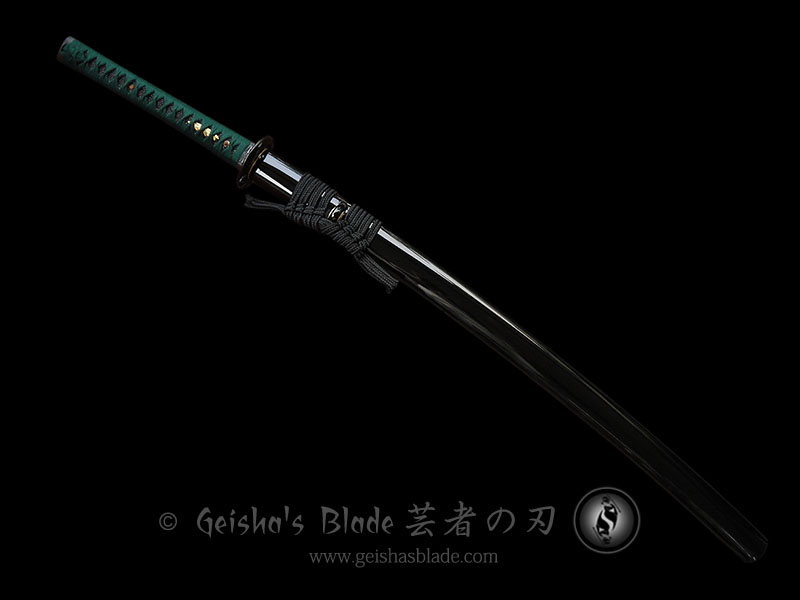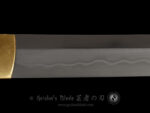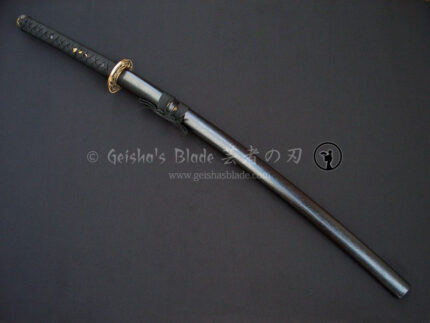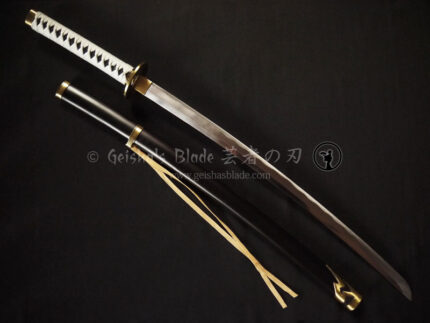Available in 2 different blade lamination types: Honsanmai or Kobuse.
Takegiri translates to “Bamboo Cutter”. We named this sword as such because it has the same blade as our Mizuchi Katana which has proven to cut well against bamboo as seen in this review. Motif of tsuba, fuchi-kashira, and menuki is bamboo; which symbolizes longevity because of its durability, strength, flexibility and resilience. It survives in the harshest conditions, and seems to endure through all the brutalities mother nature can dish out – still standing tall, and staying green year-round. The joined stems indicate the paths and steps towards enlightenment. Its flexibility and adaptability are a lesson to us all that the secret of a long happy life is to go with the flow.
The Takegiri Katana is part of our Elite Series swords because the blade is laminated (made of 2 or 3 types of steel). With honsanmai lamination (tri-steel) the blade is made of 1095 for the hard edge, 1060 for the outer layer, and 1050 for the inner core. With kobuse lamination, the blade is only made of 2 different steels, 1095 for the hard edge and 1050 for the inner core.
SPECIFICATIONS
• Blade Shape: Shobu Zukuri
• Blade Material: Tri-steel Honsanmai Laminated (1095, 1060, 1050)
• Edge: Fully-sharpened
• Treatment: Hand Forged, Differentially Hardened, Heat Treated & Tempered, Water Quenched
• Blade Length: 28.5 inches
• Tsuka: 11.5 inches wood
• Saya: 30 inches wood glossy black lacquered finish
• Fuchi / Kashira / Tsuba: Iron
• Menuki / Habaki / Seppa: Brass
• Tsukaito: Green synthetic silk
• Sageo: Black silk shigeuchi sageo
• Mekugi: 2 bamboo pegs
• Samegawa: Black lacquered real ray skin panels
• Nakago: Full tang
• Hamon: Real natural kogunome-komidare (small zigzag and slightly irregular) pattern
NOTES
• Specs may vary slightly from sword to sword
• Can be disassembled
• Includes cloth bag and carton box
The 3 close up photos of the blade show the lamination line on the edge, indicating the blade is honsanmai laminated, and you can see the real hamon as well. With kobuse, the lamination lines can only be seen at the back of the blade. Whereas with honsanmai, the lamination lines can be seen on the edge as well as on the back of the blade.
The shape of the blade is shobu-zukuri. It’s the same as shinogi-zukuri (common blade shape of our katana), except it doesn’t have a yokote (vertical line at the tip). The habaki on this sword features a “neko-gaki” or cat scratch pattern (also called falling rain) which is uncommon to see on modern production swords, but usually seen on nihonto with high quality koshirae (sword fittings).
S&D Unokubi Zukuri Tanto 1
S&D Nami Mitsudomoe Katana
S&D Kaiken
S&D Zatoichi Cane Sword 1


















































Reviews
There are no reviews yet.